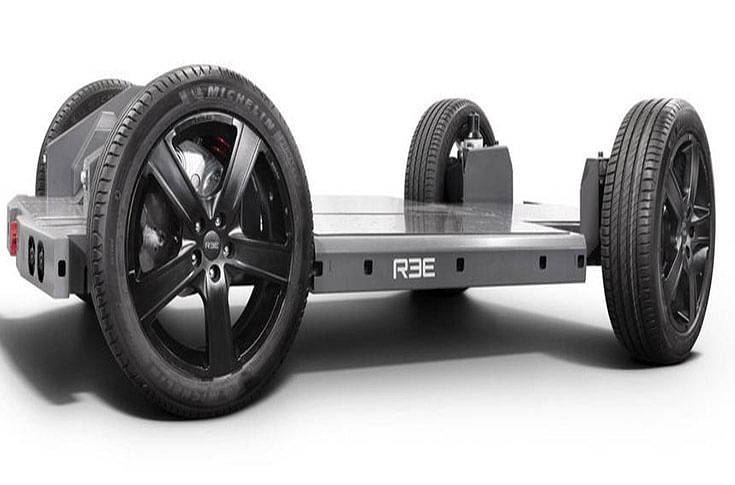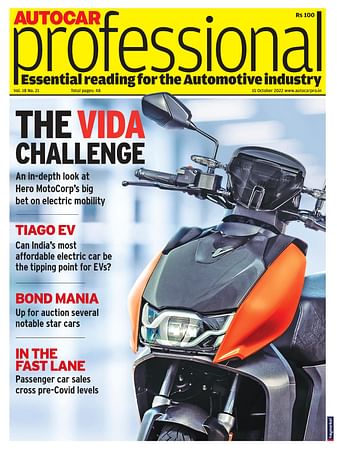Tech Talk: How air suspension can contribute to a comfortable ride
Air suspension gives a greater range of control than steel springs and is more effective at isolating vibration.
Air suspension, once associated only with a luxury ride, has now been adopted across a wide range of premium cars, because of its versatility.
Air suspension can arguably contribute to the most comfortable ride, drop the ride height low to ease getting in and out of an SUV, for instance, and reduce drag at higher speeds. It can then raise it for normal use, or even higher to increase ground clearance for off-road driving, and can be designed to change the spring rates in support of different driving modes. Air suspension can be used with any kind of damping system, including magnetorheological adaptive dampers and variable-stiffness anti-roll bars.
Air suspension units replace existing coil springs and are integrated into suspension struts. Alternatively, air springs can be used independently of dampers, particularly at the rear. The air ‘spring’ itself is normally formed by a tough, flexible airbag. They come in various types and sizes but ultimately do the same job, which is to take over the job of the steel coil spring. Using compressed air, they work a bit like a miniature and more sophisticated bouncy castle, with the air giving more resistance as it compresses.
What started as a fairly crude affair used in trucks and buses has become a microprocessor-controlled precision system capable of much more than a conventional spring. Unlike steel springs, the deflection of air spring suspension (suspension travel) isn’t proportional to the load placed upon it. That’s why the air spring can not only function like a spring but can be used to raise and lower the ride height as well. Air pressure to ‘pump up’ an air spring is supplied by a compressor, and there’s usually a reservoir to provide instantaneous pressure as the spring is working.
Inevitably, as the air spring has evolved, so has its complexity and capability. As well as variable ride height, modern systems cater for different driving modes, while control software can adapt settings to individual driving styles. It can also be used for load-levelling, preventing the car sitting on its haunches when heavily loaded or towing.
An example of a more sophisticated system is Porsche’s three-chamber air spring, which gives even more effective variation between comfort, sport and off-road settings. As the name suggests, each strut is separated into three chambers, two of which can be excluded at any one time. For the softest ride, in Comfort mode, all three are brought into play to give the maximum volume of air; then two for Sport and one for Sport Plus, which contains a much smaller compressible volume of air, creating a stiffer spring.
Despite the fancy brand names that car manufacturers give their air spring systems, the hardware is developed by various suppliers, such as BWI and Continental, with manufacturers getting involved at the software-tuning stage to suit a specific car as well as the exact specification of the hardware. And that hardware has become very sophisticated, with the simple rubber bellows of early systems now made from materials such as crossply Kevlar or crossply nylon fibres for robustness.
Just around the corner

REE Automotive, based in Tel Aviv, Israel, has designed an autonomous vehicle platform that integrates a separate drivetrain, suspension and steering system at each corner of the vehicle. The idea of the flat, drive-by-wire design is that it leaves the centre section of the chassis free of clutter for accommodating passengers. Each corner can be replaced in less than an hour, reducing maintenance downtime.
Read More
Mahindra and Israel’s REE Automotive to develop electric CVs for global markets
RELATED ARTICLES
Sept 2024 From R&D incentives to EV infrastructure: What auto components industry expects from Budget 2024
Sept 2024 From R&D incentives to EV infrastructure: What auto components industry expects from Budget 2024
US car majors hit the brakes on driverless cars
Ford Motor and Volkswagen to close self-driving startup Argo AI, due to lack of technology and clear regulations.
Autoliv and Geely to develop advanced safety tech for future vehicles
Scope of cooperation includes safety for high-level autonomous driving, intelligent steering wheel technology, a 360deg ...






 02 Sep 2020
02 Sep 2020
 13650 Views
13650 Views





 Autocar Pro News Desk
Autocar Pro News Desk




